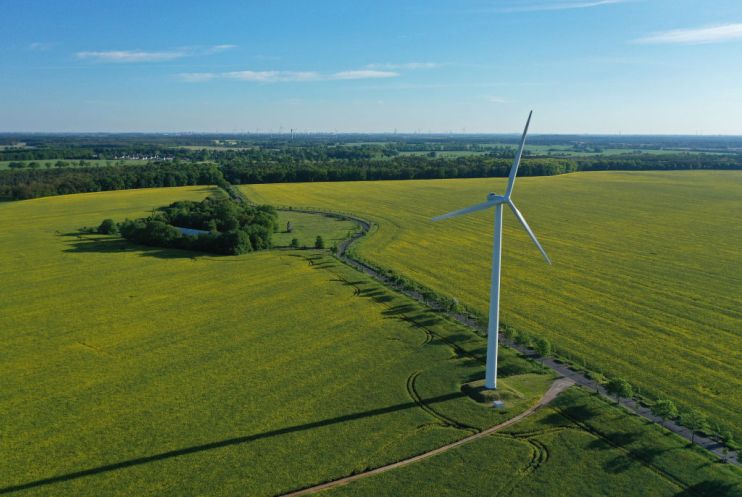Government must reveal more about onshore wind plans, say experts

Energy experts have urged the Government to reveal more details about its proposed consultation to revive onshore wind.
Downing Street announced earlier this week it will launch a technical consultation to explore how local authorities can demonstrate support for projects.
It has also proposed overhauling national planning rules to remove rigid requirements for councils to designate specific land for renewable developments in local plans – with any potential decisions expected to be announced by April 2023.
This follows immense political pressure from Tory backbenchers, with 30 MPs announcing plans to back a proposed amendment from former Levelling Up minister Simon Clarke to ease planning restrictions around onshore wind turbines.
However, until it determines how local support will be established, analysts believe it is unclear whether the Government is providing a pathway for boosting onshore wind developments.
Adam Bell, head of policy at Stonehaven and former head of energy strategy at BEIS, told City A.M. that people should wait to see the details before making judgements.
He noted that the current de-facto ban onshore wind faces was also built on the premise of establishing local support for new projects.
Bell said: “It does mean we are alas waiting for detail, unfortunately! My worry is that the very vague requirement for local support could end up repeating the mistake of the mid 2010s in a new guise. We will be looking to see that what the Government comes out with.”
Andy Mayer, energy analyst at free-market think tank the Institute of Economic Affairs, noted that the Government’s latest position on onshore wind is the consequence of political pressure rather than policymaking.
In that sense, it was no different to how the de-facto ban emerged in 2015, when former Prime Minister David Cameron called for a clampdown on ‘green crap’ to appease the right of his party.
Mayer said: “People shouldn’t then get too excited, reacting to political pressure rather than creating a functioning competitive market to facilitate a low carbon transition is how the ban arose in the first place.”
This meant establishing the terms of community consent was vital to gauging the latest developments.
He said: “Defining what ‘community consent’ means, whether votes, incentives, or a combination, and then proving in works in practice will help, and may have other benefits. For example, there should be no bar to applying the same test to other energy projects including nuclear and fracking.”
Onshore wind set to exit de-facto ban
Since 2015, proposed onshore wind farms have had to pass an extensive consent process to go ahead – with sites needing to be approved in plans established by residents with local authorities across England.
Developers also have to show that the proposal is located in area designated for renewable energy in a local plan.
These requirements have empowered local authorities to make decisions over what gets built in their own communities, but at the cost of onshore wind generation, which has since stagnated.
Currently, only 11 per cent of local authorities across England have designated areas for renewable developments in their plans, according to Dr Rebecca Windemer at the University of the West of England.
Her research reveals the maximum installed capacity of wind farms (in MW) granted planning permission between 2016-2021 is just 2.6 per cent of those granted permission between 2009-2014.
Onshore wind has also been excluded from specific generation targets in the country’s energy security strategy, even though its 14GW of domestic power outweighs the 11GW currently being generated offshore.
Dr Windemer told City A.M. the latest developments were a positive step in the right direction” but believed we needed to see the details following the consultation “before we can assess what impact the change may have.”
She explained: “It is very good to see that the requirement for local authorities to allocate suitable areas for onshore wind in local plans will be removed. However, the current wording in the press release says that ‘Local authorities would have to demonstrate their support for certain areas as being suitable for onshore wind.’ It will be really important to make this process as simple as possible for local authorities.
The academic also called for the assessment process for establishing “community consent” to be clear to prevent a small minority of opponents blocking projects with high levels of local support.
The Government has been approached for comment.